Module Introduction
Compassion in Context
Compassion has deep roots in our bodies. Research has shown that when we feel compassion, our heart rate slows down, we secrete the “bonding hormone” oxytocin, and activity in regions of the brain linked to empathy, caregiving, and feelings of pleasure increases, which motivates us to seek closeness and extend care to others.
Many scientists believe we evolved to have compassion so ingrained in our biology because human babies are exceptionally vulnerable and rely on care from adults to survive. “That simple fact changed everything,” says Dacher Keltner, co-editor of The Compassionate Instinct. “It rearranged our social structures, building cooperative networks of caretaking, and it rearranged our nervous systems. We became the super caregiving species, to the point where acts of care improve our physical health and lengthen our lives. We are born to be good to each other.”
Individual Exploration
What is Compassion?
Compassion means “to suffer together.” Among emotion researchers, it is defined as the feeling that arises when you are confronted with another’s suffering and feel motivated to relieve that suffering. Compassion is not the same as empathy or altruism, though the concepts are related. While empathy refers more generally to our ability to take the perspective of and feel the emotions of another person, compassion is when those feelings and thoughts include the desire to help. Altruism, in turn, is the kind, selfless behavior often prompted by feelings of compassion, though one can feel compassion without acting on it, and altruism isn’t always motivated by compassion.
Self-compassion is compassion turned inward: Treating yourself with kindness and understanding, acknowledging your feelings, and recognizing that everyone struggles sometimes. According to self-compassion researcher Kristin Neff, “self-compassion provides an island of calm, a refuge from the stormy seas of endless positive and negative self-judgment.” According to Neff, self-compassion entails three components:
- “First, it requires self-kindness, that we be gentle and understanding with ourselves rather than harshly critical and judgmental.”
- “Second, it requires recognition of our common humanity, feeling connected with others in the experience of life rather than feeling isolated and alienated by our suffering.”
- “Third, it requires mindfulness—that we hold our experience in balanced awareness, rather than ignoring our pain or exaggerating it.”
Watch Kristin Neff discuss the three components of self-compassion.
Compassion in Childhood
Children, including very young ones, show compassion towards others. Toddlers as young as 14 months old will hand objects to someone trying unsuccessfully to reach for them. Older toddlers will proactively help by picking up an object that someone dropped and giving a cold person a blanket or a sad person a toy.
Parental love and warmth can further support children’s innate sense of compassion. Emotional warmth is “the quality of loving relationships between parents and their children and physical and verbal behaviors parents use to express those feelings.” The Young Finns Study, which followed 2,700 Finnish children and their parents for decades, found that the children of emotionally warm parents grew into more compassionate adults. Another study found that showing teens love and affection when they do something good for others is more effective at instilling compassion as a value than material methods like a points system or allowance for helping around the house. These findings align with previous research linking greater parental warmth to greater empathy, sympathy, and caring in children and reinforce attachment theory research that suggests sensitive and responsive parenting may underpin kindness in our children.
Self-compassion is particularly important for teens and can help protect them against trauma, peer victimization, depression and self-harm, perfectionism, low self-esteem, and climate anxiety. Teens who completed an eight-week self-compassion course called Making Friends with Yourself (MFY) showed improved mental health, and the program lowered risk factors for suicidal ideation among transgender teens.
Compassion in Parenthood
Parenting is biologically linked to compassion. When people experience compassion, their brains activate in neural systems known to support parental nurturance and other caregiving behaviors, and parents’ compassionate love for their children can act as a buffer that decreases fight-or-flight stress responses during challenging parenting moments. Compassionate parenting also has psychological benefits for parents, including higher levels of parenting satisfaction and meaning in life.
Fostering self-compassion helps parents build their emotional reserves. In studies, mothers of infants who used self-compassion resources were less stressed and more satisfied with breastfeeding than those who did not. Parents who listened to a loving-kindness meditation were calmer, more sympathetic, and less angry and frustrated when asked about their emotional responses to common parenting scenarios than parents who listened to a guided imagery exercise. In another study, self-compassion acted as a shield for parents of children with autism, preventing parents from internalizing negative stigma from others. Together, these studies suggest self-compassion may be a resource for resiliency and a protective buffer against stress for parents.
When parents model self-compassion, it also benefits their children. “Since children imitate our example, treating ourselves with compassion and without judgment can help them do the same,” says Susan Pollak, author of Self-Compassion for Parents. Pollack says this can be as simple as a parent acknowledging when they are having a hard day and saying that everyone struggles sometimes.
It takes practice to develop self-compassion—for both parents and children. “At first, it can feel awkward to treat ourselves with kindness,” says Jamie Lynn Tatera, developer of the Self-Compassion for Children and Caregivers program. “Discomfort is normal any time we learn something new, but this gets better with time.” Tatera’s work has found that when parents and children practice self-compassion and mindfulness skills together, parenting stress and depression in children decrease and increase mindful parenting and self-compassion. “[L]earning self-compassion together can provide intergenerational benefits and increase the parent-child connection,” says Tatera.
Compassionate Conversations
Parents can foster compassion in their children by welcoming conversations about what is happening in the world, including sad topics such as war or racial injustice. “Every conversation we have with a child in our lives is an opportunity to strengthen our relationship, build their resilience and our own, and foster a more compassionate society,” says researcher Shauna Tominey.
Here are some tips from Tominey and Abigail Gewirtz, professor of psychology at Arizona State University, for how to have conversations with children about difficult topics:
- Tend to your own needs: As parents seek to help their children make sense of violence and inhumanity, they, too, need to acknowledge their heartbreak. Find ways to connect with your community of friends and loved ones and receive their compassionate support.
- Seek to understand more deeply and listen: Taking time to go beyond the headlines and learn more about the topic can help you feel more prepared to have a conversation. Invite your child to tell you what they’ve heard or wondered about. Listen attentively to their thoughts and questions. Be curious and allow them to keep sharing their perspective with you.
- Be humble and honest: “Even if you don’t have an answer to a question, talk together about strategies to look up information from sources you trust and about what makes a source reliable,” says Tominey.
- Prioritize humanity: Talk to your child about individual people and their life stories. “Through these conversations, we can help teach children that the identities and cultural traditions each person carries are just as important to them as yours are to you,” says Tominey.
- Help your children take compassionate action: “The really important thing for parents to understand is that, just like us, children need to feel that there is something they can do,” says Gewirtz. Some children may want to find ways to donate to humanitarian organizations. Older children may want to participate in marches to express themselves non-violently.
- Be a haven for children to navigate their emotions: “Let them know that all feelings are OK,” says Tominey. “Help your child express their feelings in healthy ways, such as by talking about them; sharing feelings through stories, artwork, and play; taking a walk; or in other ways.”
Listen to Shauna Tominey talk about having conversations with kids that nurture compassion.
Nurturing Compassion
Compassion training programs reveal how we can boost feelings of compassion in ourselves and others. Here are some of the best tips to emerge out of those programs, as well as other research:
- Look for commonalities: Seeing yourself as similar to others increases feelings of compassion. One study shows that something as simple as tapping your fingers to the same rhythm as a stranger increases compassionate behavior.
- Encourage cooperation, not competition: A seminal study showed that describing a game as a “Community Game” led players to cooperate and share a reward evenly; describing the same game as a “Wall Street Game” made the players more cutthroat and less honest.
- See people as individuals (not abstractions): When presented with an appeal from an anti-hunger charity, and people were more likely to give money after reading about a starving girl than after reading statistics on starvation—even when those statistics were combined with the girl’s story.
- Don’t play the blame game: When we blame others for their misfortune, we feel less tenderness and concern toward them.
- Respect your inner changemaker: When we think we’re capable of making a difference, we’re less likely to curb our compassion.
- Don’t be a sponge: When we completely take on other people’s suffering as our own, we risk feeling personally distressed, threatened, and overwhelmed; in some cases, this can even lead to burnout. Instead, try to be receptive to other people’s feelings without adopting those feelings as your own.
- Notice and savor how good it feels to be compassionate: Studies have shown that practicing compassion and engaging in compassionate action bolsters brain activity in areas that signal reward.
- Take routine self-compassion breaks: First, accept the moment of suffering with a statement like, “This hurts.” Next, acknowledge that other parents have felt this way. Last, offer yourself kindness, such as by saying, “May I give myself the compassion that I need as I try to care for my child.”
- Visualize the presence of someone important to you when you need support: In one study, college students who were asked to call to mind a person they could rely on to help them if they were in need felt more self-compassion than students who were asked to reflect on interpersonal skills.
- Build a “self-compassion toolbox” that contains practices that you and your child can use when things get tough: These practices could include listening to a music meditation, using comforting gestures (like putting your hand over your heart, stroking your arm, or cradling your face in your hands), and looking at pictures of things that make you smile.
Self-Compassion Reflection
Take a moment to reflect on self-compassion’s role in your life before you bring the learning in this chapter to the parents you work with.
- Read the statements below and ask yourself these questions:
- How much do you agree or disagree with each of the statements?
- Do your responses reveal to you that there are opportunities for becoming more compassionate towards yourself?
- What do these statements reveal about your current relationship with self-compassion?
- Read the statements again as you seek to understand the presence or absence of self-compassion among the parents you support professionally.
- How much do you think the parents you work with agree or disagree with each statement?
- What resources could the community offer to assist parents in cultivating self-compassion?
- What experiences of self-compassion have parents shared with you that could guide other parents looking to foster more self-compassion in themselves and their children?
- When I’m feeling down, I try to approach my feelings with curiosity and openness.
- When I’m down and out, I remind myself that many other people in the world feel like I am.
- I’m kind to myself when I’m experiencing suffering.
- I try to be patient and understanding toward the aspects of my personality that I don’t like.
- I try to see my failings as part of the human condition.
Practices to Foster Compassion
Now that you have been introduced to this topic, you can explore practices to nurture compassion and self-compassion. The first set is a “Practitioner and Parent Practice.” Use it to nurture your well-being. Next, share the same practices with parents to guide them in fostering their well-being. The second set is “Parent-Child Practices,” which you can share with parents. They are compassion and self-compassion activities for parents and children.
Practitioner and Parent Practice
First, try this step-by-step activity for yourself and then guide the parents you support through the practice. During and after the activity, take a moment to pause and notice your thoughts, sensations, and feelings. Guide the parents you work with in doing the same.
Compassion
Feeling Supported: Recalling how others have comforted us can make us more compassionate.
Self-Compassion
Fierce Self-Compassion Break: Cultivate the clarity and courage to protect yourself from harm.
Practices for Parents
You can guide parents on these step-by-step activities to support compassion and self-compassion. During and after the parenting activity, encourage the parents to pause to notice their thoughts, sensations, and feelings.
Compassion
Loving-Kindness Meditation: Strengthen feelings of kindness and connection toward others.
Self-Compassion
Discoveries, Wonderings, and Commitments
- Discoveries
- What are three to five key takeaways about compassion that are most relevant for you personally and professionally?
- How much of a challenge is a lack of compassion or self-compassion in your community?
- Wonderings
- How might parents in your community respond to the practices to foster compassion?
- What kinds of modifications to the compassion practices would you consider making to meet the specific needs of the parents in your community?
- Commitments
- What actions do you intend to take based on your learnings about compassion for yourself? For the parents you work with?
- Which compassion practice will you share with the parents you work with? What will you say and do to guide them to try this practice?
Additional Compassion Resources
- Video: How to Help Your Child’s Compassion Grow
- Article: Self-Compassion for Parents
- Article: How to Help Teens Become More Self-Compassionate
- Article: Why Parents Need a Little Self-Compassion
Module Resources
This workbook offers parenting practitioners practical lessons and activities to help the reader prioritize cultivating your social and emotional well-being while additionally supporting you in sharing these insights and practices with the parents and families you serve. This workbook includes a chapter on compassion as well as chapters on foundational topics like cultural humility, coparenting, healing and resilience and more.
This is an exercise to help you recall how others have comforted you.
This is an exercise to help you cultivate the clarity and courage to protect yourself from harm.
Group Facilitation
Before facilitating parent groups, spend time in individual exploration in order to experience and embody the learning. In this tab, you will find:
- A chapter with resources for engaging parents and facilitating parent gatherings. (Chapter from GGSC’s Family Well-Being for the Greater Good: A science based workbook for people who support parents)
- A turnkey revisable slide deck designed to support you in facilitating a parent gathering about cultivating compassion.
- A printable handout for parents to take home that includes information about the importance of compassion for parents and children as well as activities to compassion.
Module Resources
This chapter provides support for planning and facilitating parent gatherings. It includes information on building community, reducing barriers to participation, creating welcoming environments, group agreements, and more.
This slide deck is a tool that you can edit and use to share resources on cultivating compassion at an upcoming parent night. If you prefer working in Google Slides, you can download a copy of this Google Slide deck to edit: https://bit.ly/3X6HgS1
This handout can be printed and shared with parents. In addition to introducing parents the the benefits of cultivating compassion, this handout includes links to resources on cultivating compassion for parents and for children.

Do you want to dive deeper into the science behind our GGIE practices? Enroll in one of our online courses for educators!



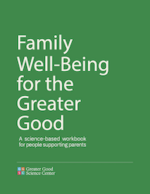
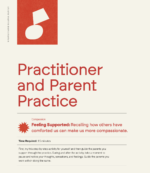
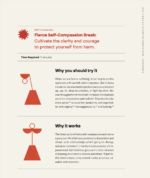
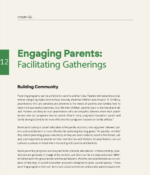

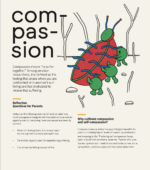
Comments